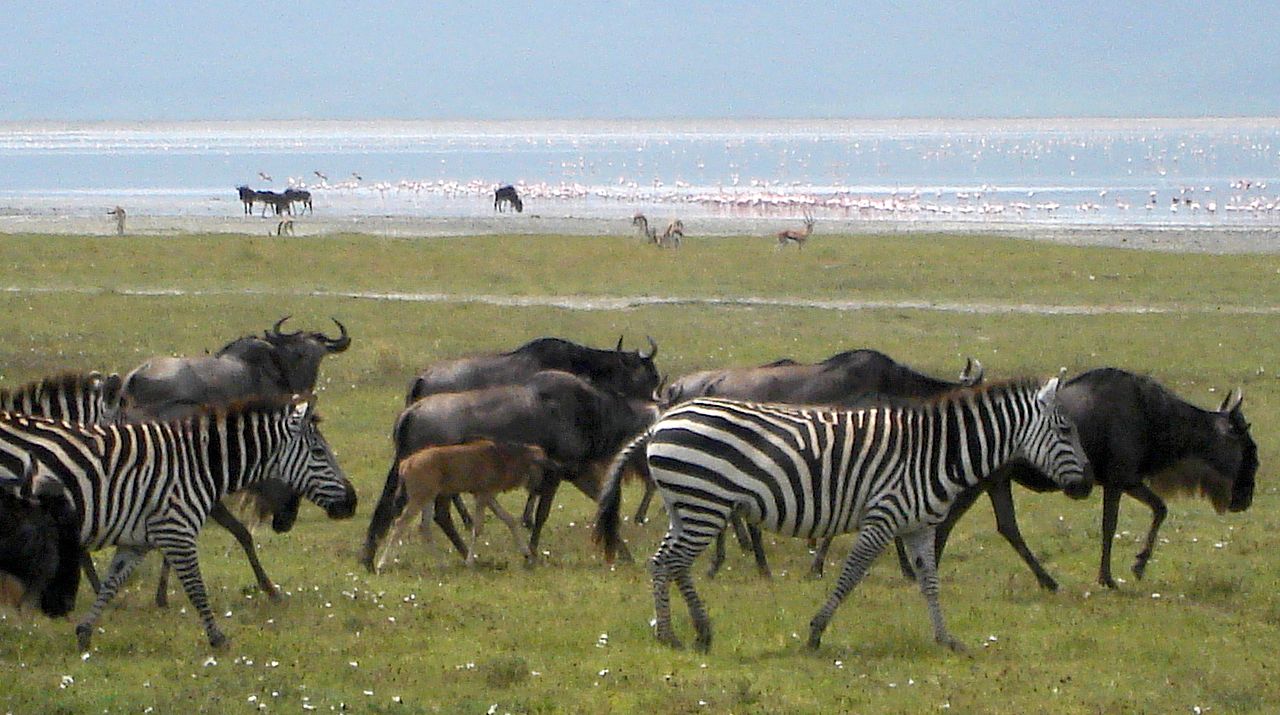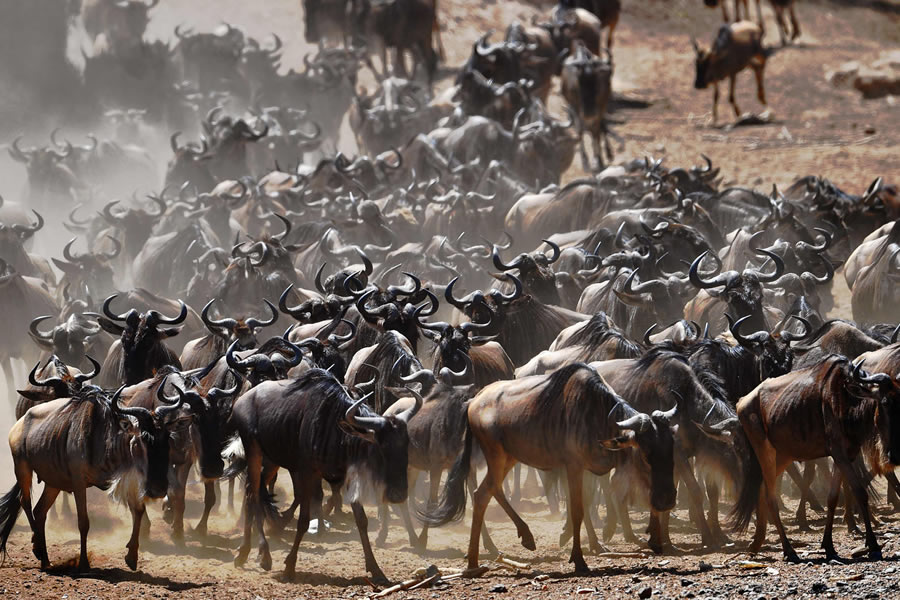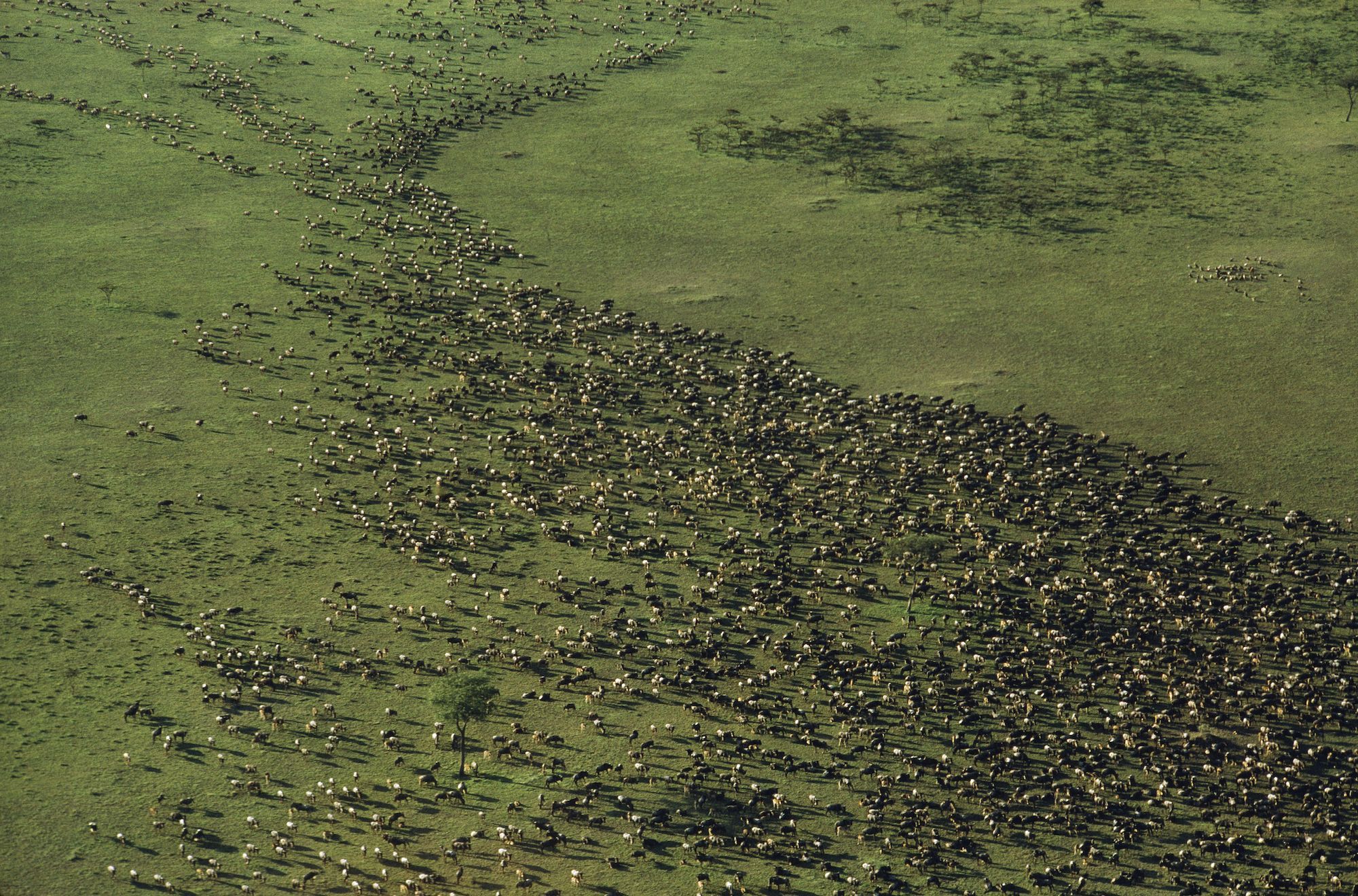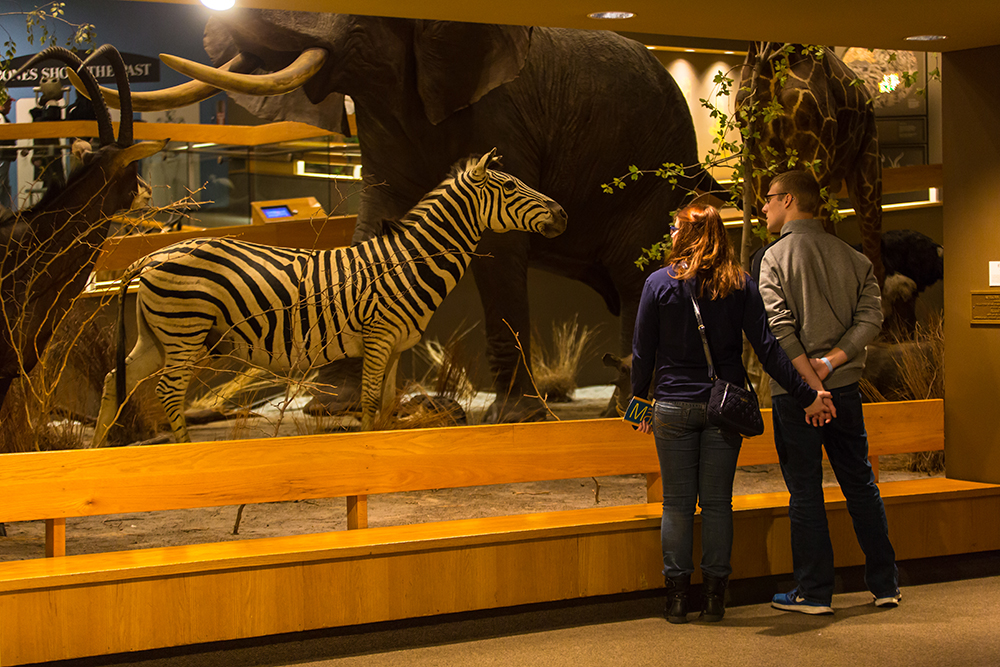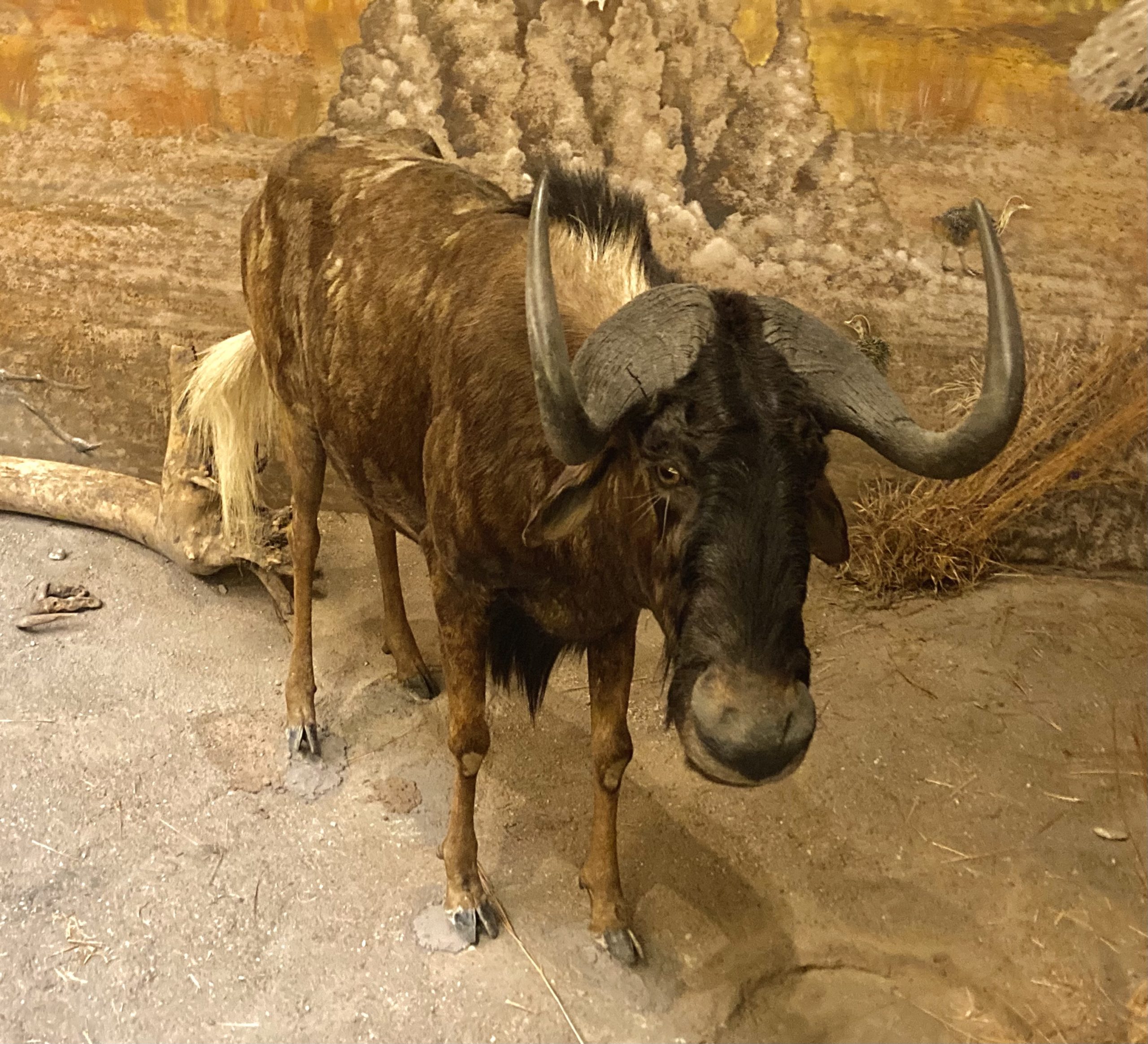
The Migration of the Wildebeest
The great wildebeest migration is a fascinating journey that takes place on the continent of Africa once a year. The migration occurs in eastern Africa in the Serengeti plains part of Tanzania and moves into the Masai Mara national reserve area of Kenya. It is known as the largest single overland movement of wild animals in the world. Many people come to Africa just to observe and photograph this remarkable journey. It is considered one of the seven natural wonders of Africa and one of the 10 natural travel wonders of the world.
There are two species of wildebeest, the black wildebeest and the blue wildebeest. It is the blue wildebeest that takes part in the migration. They are part of the antelope family and are also known as the white bearded wildebeest or the brindled gnu. They can grow up to 8 feet long and weigh 600 pounds. The wildebeest is a herbivore. Their diet consists mainly of short grasses. If food is scarce they will eat the leaves of shrubs and trees. A herd can eat around 4000 tons of grass a day. The wildebeest have a close relationship with the zebras when it comes to eating the grasses. The zebras eat the upper most grass leaving the lower greener grass for the wildebeests. Wildebeest are fast runners being able to run at speeds up to 50 miles an hour giving them an advantage when being chased by predators.
During the months of January, February and March the wildebeest live on the grasslands also known as the Savanah of the southern Serengeti. This time of year due to the rainfalls from November and December there is fresh water and rich green grasses for the wildebeest to feast upon. During this time a half a million calves are born at the rate of about 8000 a day over a 3-4 week period. What is remarkable is the calves are able to run within 2 minutes of being born.
The wildebeest migration generally begins around April when the grasslands dry up and the rains begin to fall in the South West. They begin to follow the rain pattern. Where there will be fresh food and water. The migration may change from year to year due to the unpredictability of the weather. Around 2 million wildebeest head out on the long journey along with zebras, eland, gazelles and impalas. The wildebeest have much danger ahead of them, they will have to face predators such as lions, hyenas, cheetahs, leopards, wild dogs, and giant Nile crocodiles who are waiting to prey upon them along the way.
The wildebeest travel in a 500 mile loop going clockwise. There is no herd leader to lead the groups. They travel at the pace of about 6 miles a day. They move in large herds and some will break into smaller herds all following the same migration pattern.
In May and June the wildebeest will head North and arrive at edge of the Mara river. At the Mara river the great Nile crocodiles are awaiting their crossing. The crocodiles will prey upon the young and weak animals. One wildebeest is enough to satisfy a crocodiles appetite for a year.
In July it is mating season known as the rut. The males fight for the female but it’s the female wildebeest that will choose the male or several males to mate with. At this time the males a known to be very aggressive and loud and can be heard about 1 1/4 miles away.
In October the wildebeest follow the short rains which are south the Masai Mara heading back towards the grasslands of the southern Serengeti completing their journey by November. They remain until the next year where they begin the whole process again.

The migration is an important contributor to the Serengeti ecosystem . During the migration around 250,000 wildebeest will die due to hunger, thirst, exhaustion and predators. Though it is sad that many migrating animals will die. It is nature’s way for ongoing survival of life on the Serengeti. The animals provide food for their predators. The decaying bodies from what the predators leave behind provide food for local scavengers including vultures and fish. These decaying bodies also leave behind nutrients and minerals that go back into the soil creating a complete ecosystem.
It is interesting to note that no one knows exactly why the migration occurs. One theory based on fossil evidence found across the Serengeti that is that they have been roaming the East African plains for over one million years. This could mean that it’s in their DNA and they are guided by instinct.
Sources
https://www.smithsonianmag.com/science-nature/for-wildebeests-danger-ahead-13930092/
https://en.wikipedia.org/wiki/Wildebeest
What is the Great Migration and When is the Best Time to Go On an East Africa Vacation?
https://phys.org/news/2016-10-loss-wildebeest-migration-giraffes.html
https://www.venchatravel.com/blog/great-wildebeest-migration-guide.htm
https://www.zambezi.com/safari-type/migration-safaris
https://www.journeysdiscoveringafrica.com/5-reasons-to-add-the-wildebeest-migration-to-your-bucket-list/
https://www.smithsonianmag.com/science-nature/for-wildebeests-danger-ahead-13930092/
https://blog.nationalgeographic.org/2017/02/08/how-does-the-great-wildebeest-migration-work/
https://www.africatouroperators.org/wildebeest-migration
Donna Dorans is a science docent at the Springfield Museums


